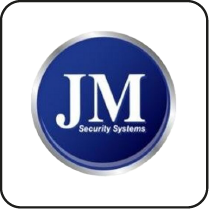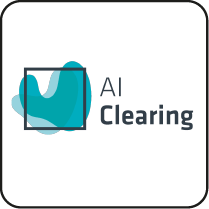Understanding ISO 14001 Certification
What is ISO 14001 and its Significance?
ISO 14001 is an internationally recognised standard for Environmental Management Systems (EMS). It provides a framework for organisations to protect the environment, respond to changing environmental conditions, and improve their environmental performance. The standard emphasises a systematic approach to managing environmental responsibilities, ensuring compliance with legal and other requirements, and achieving environmental objectives.
Key Components of ISO 14001
ISO 14001 is structured around several key components, including:
- Environmental Policy: A commitment to environmental protection, compliance, and continual improvement (Clause 5.2).
- Planning: Identifying environmental aspects, determining compliance obligations, and setting objectives (Clause 6).
- Support: Ensuring resources, competence, awareness, and communication (Clause 7).
- Operation: Implementing operational controls and emergency preparedness (Clause 8).
- Performance Evaluation: Monitoring, measuring, and evaluating environmental performance (Clause 9).
- Improvement: Addressing nonconformities and pursuing continual improvement (Clause 10).
Benefits of ISO 14001 Certification
ISO 14001 certification offers numerous benefits to organisations, including:
- Enhanced Environmental Performance: Systematic management of environmental aspects leads to reduced waste, energy consumption, and emissions.
- Regulatory Compliance: Ensures adherence to environmental laws and regulations, reducing the risk of fines and legal actions.
- Market Advantage: Demonstrates a commitment to sustainability, enhancing reputation and competitiveness.
- Operational Efficiency: Streamlined processes and resource efficiency result in cost savings.
- Stakeholder Confidence: Builds trust with customers, investors, and the community by showcasing environmental responsibility.
Industries Commonly Seeking ISO 14001 Certification
A wide range of industries pursue ISO 14001 certification, including manufacturing, construction, logistics, healthcare, and energy. These sectors often face significant environmental impacts and regulatory requirements, making ISO 14001 a valuable tool for managing their environmental responsibilities.
How ISMS.online Helps with ISO 14001 Certification
ISMS.online offers comprehensive support for organisations seeking ISO 14001 certification. Our platform provides tools for:
- Gap Analysis: Identifying areas for improvement and aligning with ISO 14001 requirements.
- EMS Development: Facilitating the creation and integration of an effective EMS.
- Documentation Management: Ensuring proper control and accessibility of necessary documents.
- Performance Monitoring: Tracking environmental performance and compliance with real-time data.
By utilising ISMS.online, organisations can streamline their path to ISO 14001 certification, ensuring robust environmental management and continual improvement.
Book a demoInitial Steps to ISO 14001 Certification
What Preliminary Assessments Are Required?
Before embarking on the ISO 14001 certification journey, organisations need to conduct a thorough preliminary assessment. This involves understanding the current environmental management practices, identifying key environmental aspects, and evaluating compliance with existing regulations. This assessment helps establish a baseline for improvement and identifies areas that require attention (Clause 4.1).
How to Conduct a Gap Analysis?
A gap analysis is essential for identifying discrepancies between the current environmental management system and the ISO 14001 requirements. This process involves reviewing existing policies, procedures, and practices to pinpoint areas that do not meet the standard. By systematically comparing the current state with the ISO 14001 framework, organisations can develop a targeted action plan to address these gaps (Clause 6.1.2).
What Resources Are Needed for Initial Planning?
Effective initial planning requires allocating appropriate resources, including personnel, budget, and time. Organisations should ensure they have access to relevant expertise, either internally or through external consultants. Additionally, investing in tools and platforms like ISMS.online can streamline the planning process by providing templates, guidance, and real-time data tracking to support compliance efforts (Clause 7.1).
How to Set Up a Project Team for ISO 14001 Implementation?
Setting up a dedicated project team is essential for successful ISO 14001 implementation. This team should include representatives from various departments, such as operations, compliance, and environmental management. Assigning clear roles and responsibilities ensures accountability and fosters collaboration. Regular meetings and progress reviews help keep the project on track and address any challenges promptly (Clause 5.3).
By following these initial steps, organisations can lay a solid foundation for achieving ISO 14001 certification, ensuring a systematic approach to environmental management and continuous improvement.

An 81% Headstart from day one
We’ve done the hard work for you, giving you an 81% Headstart from the moment you log on. All you have to do is fill in the blanks.

Developing an Environmental Management System (EMS)
Essential Elements of an EMS
An effective Environmental Management System (EMS) includes several key components:
- Environmental Policy: A formal statement of the organisation’s commitment to environmental protection, compliance, and continual improvement (Clause 5.2).
- Planning: Identifying significant environmental aspects, compliance obligations, and setting measurable objectives (Clause 6).
- Support: Ensuring resources, competence, awareness, and communication (Clause 7).
- Operation: Implementing controls for significant environmental aspects and emergency preparedness (Clause 8).
- Performance Evaluation: Monitoring, measuring, and evaluating environmental performance (Clause 9).
- Improvement: Addressing nonconformities and pursuing continual improvement (Clause 10).
Aligning EMS with ISO 14001 Requirements
To align your EMS with ISO 14001, follow these steps:
- Conduct a Gap Analysis: Identify discrepancies between current practices and ISO 14001 requirements (Clause 6.1.2).
- Develop an Action Plan: Address identified gaps with specific actions, timelines, and responsibilities.
- Integrate Compliance Obligations: Ensure all legal and other requirements are incorporated into the EMS (Clause 6.1.3).
- Set SMART Objectives: Establish Specific, Measurable, Achievable, Relevant, and Time-bound environmental objectives (Clause 6.2).
Necessary Documentation for EMS
Documentation is essential for an effective EMS. Key documents include:
- Environmental Policy: Outlining the organisation’s environmental commitments.
- Procedures and Work Instructions: Detailing operational controls and processes.
- Records: Evidence of compliance, monitoring data, and audit results (Clause 7.5).
- Emergency Preparedness Plans: Procedures for responding to environmental emergencies (Clause 8.2).
Integrating EMS with Existing Management Systems
Integrating your EMS with other management systems, such as ISO 9001 (Quality Management) and ISO 45001 (Occupational Health and Safety), can enhance efficiency and coherence. Use Annex SL’s high-level structure to streamline integration:
- Unified Policies and Objectives: Develop policies and objectives that address multiple standards.
- Common Processes: Align processes like internal audits and management reviews across systems.
- Shared Documentation: Use a centralised platform like ISMS.online to manage documents, track compliance, and monitor performance across all standards.
By following these guidelines, organisations can develop a robust EMS that aligns with ISO 14001, ensuring effective environmental management and continuous improvement.
Planning and Setting Objectives
Identifying Environmental Aspects and Impacts
To identify environmental aspects and impacts, start by mapping out all activities, products, and services within your organisation. Evaluate each for potential environmental interactions, such as emissions, resource use, and waste generation. Use tools like flowcharts and checklists to ensure comprehensive coverage. Prioritise significant aspects based on criteria like frequency, severity, and regulatory requirements (Clause 6.1.2).
Criteria for Setting Environmental Objectives
Setting effective environmental objectives involves aligning them with your organisation’s environmental policy and significant aspects. Objectives should be SMART: Specific, Measurable, Achievable, Relevant, and Time-bound. Consider regulatory requirements, stakeholder expectations, and technological capabilities. Ensure objectives drive continual improvement and compliance with ISO 14001 standards (Clause 6.2).
Developing an Action Plan to Achieve Objectives
Developing an action plan requires breaking down each objective into actionable steps. Assign responsibilities, set timelines, and allocate necessary resources. Use tools like Gantt charts to visualise progress and dependencies. Regularly review and adjust the plan to address any challenges or changes in circumstances. Ensure the plan is documented and accessible to relevant stakeholders (Clause 6.2.2).
Ensuring Objectives Align with ISO 14001 Standards
To ensure alignment with ISO 14001 standards, integrate the objectives into your Environmental Management System (EMS). Use the Plan-Do-Check-Act (PDCA) cycle to systematically plan, implement, monitor, and review objectives. Regularly conduct internal audits and management reviews to assess progress and compliance. Utilise platforms like ISMS.online for real-time tracking and documentation management, ensuring continuous alignment with ISO 14001 requirements (Clause 9.3).

Free yourself from a mountain of spreadsheets
Embed, expand and scale your compliance, without the mess. IO gives you the resilience and confidence to grow securely.

Implementing the EMS
Steps for Effective EMS Implementation
Implementing an Environmental Management System (EMS) involves several key steps. Start by establishing a clear environmental policy that aligns with ISO 14001 requirements (Clause 5.2). Conduct a comprehensive gap analysis to identify areas needing improvement (Clause 6.1.2). Develop an action plan with specific tasks, responsibilities, and timelines. Ensure all compliance obligations are integrated into the EMS (Clause 6.1.3). Utilise ISMS.online to streamline documentation and track progress.
Ensuring Employee Involvement and Training
Employee involvement is essential for EMS success. Begin by raising awareness about the environmental policy and objectives (Clause 7.3). Provide targeted training to ensure employees understand their roles and responsibilities (Clause 7.2). Use interactive workshops and e-learning modules available on ISMS.online to enhance engagement. Regularly update training programmes to reflect changes in regulations and internal processes.
Best Practices for Operational Control
Operational control ensures that environmental aspects are managed effectively. Implement standard operating procedures (SOPs) for activities with significant environmental impacts (Clause 8.1). Use engineering controls and administrative measures to mitigate risks. Regularly review and update procedures to adapt to new challenges. ISMS.online can help manage these controls by providing real-time monitoring and automated updates.
Managing Communication and Documentation
Effective communication and documentation are vital for EMS implementation. Establish clear communication channels to disseminate information about environmental performance and compliance (Clause 7.4). Use ISMS.online to centralise document management, ensuring accessibility and version control (Clause 7.5). Regularly review and update documents to maintain accuracy and relevance. Engage stakeholders through transparent reporting and feedback mechanisms.
By following these steps, organisations can implement an EMS that aligns with ISO 14001, ensuring robust environmental management and continuous improvement.
Monitoring and Measurement
Establishing Monitoring and Measurement Processes
To establish effective monitoring and measurement processes, organisations should first define key performance indicators (KPIs) that align with their environmental objectives and compliance obligations. These KPIs should be specific, measurable, and relevant to the organisation’s significant environmental aspects (Clause 9.1.1).
Develop a comprehensive plan that outlines the methods, frequency, and responsibilities for monitoring and measurement activities. Ensure that the plan includes procedures for data collection, analysis, and reporting to facilitate continuous improvement and informed decision-making.
Tools and Techniques for Data Collection
Various tools and techniques can be employed for data collection, depending on the environmental aspects being monitored. Common methods include:
- Automated Sensors: For real-time monitoring of emissions, energy consumption, and resource usage.
- Manual Sampling: For periodic assessment of water quality, soil contamination, and waste generation.
- Surveys and Audits: To gather qualitative data on environmental practices and compliance status.
Utilise platforms like ISMS.online to integrate these tools, ensuring seamless data collection, storage, and analysis.
Evaluating Environmental Performance
Evaluating environmental performance involves analysing the collected data against established KPIs and compliance obligations. Use statistical methods and trend analysis to identify patterns, deviations, and areas for improvement (Clause 9.1.2).
Regularly review performance data in management meetings to ensure alignment with environmental objectives and to drive continuous improvement. ISMS.online’s performance monitoring features can provide real-time insights and facilitate comprehensive evaluations.
Ensuring Compliance with Legal and Other Requirements
Compliance with legal and other requirements is critical for maintaining ISO 14001 certification. Establish a compliance register that lists all applicable regulations, standards, and voluntary commitments (Clause 6.1.3).
Regularly update the register to reflect changes in legislation and industry standards. Conduct periodic compliance audits to verify adherence and identify any nonconformities. Use ISMS.online’s compliance tracking tools to automate updates, monitor compliance status, and manage corrective actions efficiently.
By implementing these strategies, organisations can ensure robust monitoring and measurement processes, driving continual improvement and maintaining compliance with ISO 14001 standards.

Manage all your compliance, all in one place
ISMS.online supports over 100 standards and regulations, giving you a single platform for all your compliance needs.

Conducting Internal Audits
Purpose of Internal Audits in ISO 14001
Internal audits are essential for evaluating the effectiveness of the Environmental Management System (EMS) and ensuring compliance with ISO 14001 requirements. They help identify areas for improvement, verify adherence to processes, and ensure that environmental objectives are being met (Clause 9.2.1).
Planning and Scheduling Internal Audits
Effective planning and scheduling involve creating an audit programme that covers all relevant processes and areas within the organisation. This programme should be based on the significance of environmental aspects, compliance obligations, and previous audit results. Scheduling should ensure regular audits and comprehensive coverage within a specified timeframe (Clause 9.2.2).
Key Steps in Conducting an Internal Audit
- Preparation: Define the audit scope, objectives, and criteria. Select qualified auditors independent of the activities being audited.
- Execution: Conduct the audit by gathering evidence through interviews, observations, and document reviews. Evaluate the evidence against the audit criteria to identify nonconformities and areas for improvement.
- Reporting: Document the audit findings, including nonconformities, observations, and opportunities for improvement. Provide a clear and concise report to management and relevant stakeholders.
- Follow-Up: Ensure corrective actions are taken to address identified nonconformities. Monitor the effectiveness of these actions to prevent recurrence (Clause 9.2.2).
Documenting and Reporting Audit Findings
Documenting audit findings involves creating detailed records of the audit process, including the scope, criteria, evidence collected, and conclusions drawn. Use ISMS.online to streamline documentation, ensuring all records are accessible and well-organised. Reporting should include a summary of findings, nonconformities, and recommendations for improvement. Share the report with top management and relevant departments to facilitate corrective actions and continuous improvement (Clause 9.2.2).
By following these steps, organisations can ensure that their internal audits are thorough, effective, and aligned with ISO 14001 requirements, driving continual improvement and robust environmental management.
Further Reading
Management Review and Continuous Improvement
Role of Management Review in ISO 14001
Management review in ISO 14001 ensures the Environmental Management System (EMS) remains effective, relevant, and aligned with the organisation’s strategic direction. It involves top management evaluating the EMS’s performance, identifying areas for improvement, and making informed decisions to enhance environmental performance (Clause 9.3).
Preparing for a Management Review Meeting
Preparation for a management review meeting involves gathering comprehensive data on environmental performance, compliance status, internal audit results, and progress towards environmental objectives. Key inputs include monitoring and measurement data, audit findings, nonconformities, and feedback from stakeholders. Using ISMS.online, you can streamline data collection and ensure all relevant information is readily accessible for review.
Key Elements of Continuous Improvement
Continuous improvement in ISO 14001 focuses on enhancing the EMS’s effectiveness and environmental performance. Key elements include:
- Regular Monitoring and Measurement: Continuously track environmental aspects and impacts to identify improvement opportunities (Clause 9.1).
- Internal Audits: Conduct periodic audits to assess compliance and identify areas for enhancement (Clause 9.2).
- Management Reviews: Regularly review the EMS to ensure it meets organisational goals and regulatory requirements (Clause 9.3).
Implementing Corrective and Preventive Actions
Implementing corrective and preventive actions involves addressing identified nonconformities and preventing their recurrence. Steps include:
- Nonconformity Identification: Detect and document nonconformities through audits and monitoring.
- Root Cause Analysis: Investigate the underlying causes of nonconformities to develop effective corrective actions.
- Action Planning: Develop and implement corrective actions to address the root causes and prevent recurrence.
- Effectiveness Evaluation: Monitor and evaluate the effectiveness of implemented actions to ensure they achieve the desired outcomes (Clause 10.2).
Using ISMS.online, organisations can efficiently track nonconformities, assign corrective actions, and monitor progress, ensuring a robust approach to continuous improvement and compliance with ISO 14001 standards.
Preparing for the Certification Audit
Stages of the Certification Audit Process
The certification audit process for ISO 14001 typically involves two main stages:
-
Stage 1 Audit: This initial review assesses the organisation’s readiness for certification. It includes a documentation review to ensure that the Environmental Management System (EMS) aligns with ISO 14001 requirements (Clause 7.5). The auditor will identify any major gaps and provide feedback for improvement.
-
Stage 2 Audit: This comprehensive audit evaluates the implementation and effectiveness of the EMS. The auditor will conduct site visits, interview staff, and review records to verify compliance with ISO 14001 standards (Clause 9.2.2). Successful completion of this stage leads to certification.
Selecting a Certification Body
Choosing the right certification body is essential for a smooth audit process. Consider the following factors:
- Accreditation: Ensure the certification body is accredited by a recognised national or international accreditation body.
- Experience: Look for a certification body with experience in your industry and familiarity with ISO 14001.
- Reputation: Research the certification body’s reputation for thoroughness and professionalism.
- Support Services: Some certification bodies offer additional support, such as pre-audit assessments or training.
Documentation Required for the Audit
Prepare the following key documents for the certification audit:
- Environmental Policy: Outlining the organisation’s commitment to environmental management (Clause 5.2).
- EMS Manual: Describing the scope, processes, and procedures of the EMS.
- Records of Compliance Obligations: Documentation of legal and other requirements (Clause 6.1.3).
- Monitoring and Measurement Records: Data on environmental performance and compliance (Clause 9.1.1).
- Internal Audit Reports: Findings from internal audits (Clause 9.2.2).
- Management Review Minutes: Records of management review meetings (Clause 9.3).
Addressing Nonconformities Identified During the Audit
If nonconformities are identified during the audit, take the following steps:
- Root Cause Analysis: Investigate the underlying causes of the nonconformity.
- Corrective Action Plan: Develop and implement actions to address the root causes and prevent recurrence (Clause 10.2).
- Documentation: Record the nonconformity, corrective actions, and evidence of their effectiveness.
- Follow-Up: Monitor the implementation of corrective actions and verify their effectiveness in subsequent audits.
Using ISMS.online, organisations can efficiently manage documentation, track corrective actions, and ensure continuous compliance with ISO 14001 standards.
Achieving and Maintaining Certification
Steps to Achieve ISO 14001 Certification
Achieving ISO 14001 certification involves several key steps. Begin by conducting a thorough gap analysis to identify areas needing improvement (Clause 6.1.2). Develop a comprehensive Environmental Management System (EMS) that aligns with ISO 14001 requirements, including setting SMART environmental objectives (Clause 6.2). Implement the EMS, ensuring employee involvement and training (Clause 7.2). Conduct internal audits to verify compliance and address any nonconformities (Clause 9.2.2). Finally, undergo a certification audit by an accredited body, addressing any identified gaps.
Maintaining Certification Through Surveillance Audits
Maintaining ISO 14001 certification requires regular surveillance audits. These audits, typically conducted annually, ensure ongoing compliance with the standard. Prepare by continuously monitoring environmental performance and updating the compliance register to reflect any changes in regulations (Clause 9.1.1). Use ISMS.online to streamline documentation and track corrective actions. Engage employees through ongoing training and awareness programmes to maintain a culture of environmental responsibility (Clause 7.3).
Common Challenges in Maintaining Certification
Maintaining certification can present challenges such as adapting to evolving regulations, ensuring continuous employee engagement, and managing documentation. Regularly review and update the EMS to reflect changes in legal requirements and industry standards (Clause 6.1.3). Address employee turnover by providing consistent training and clear communication of roles and responsibilities (Clause 7.2). Utilise ISMS.online to manage documentation efficiently, ensuring accessibility and version control.
Leveraging Certification for Business Growth
ISO 14001 certification can be leveraged for business growth by enhancing market reputation, improving stakeholder confidence, and achieving operational efficiencies. Promote your certification in marketing materials to demonstrate commitment to sustainability. Use the certification to build trust with customers, investors, and regulatory bodies. Additionally, the systematic approach of ISO 14001 can lead to cost savings through improved resource efficiency and waste reduction (Clause 8.1). By leveraging these benefits, organisations can drive business growth and achieve long-term success.
Integrating ISO 14001 with Other Standards
Integrating ISO 14001 with ISO 9001 (Quality Management)
Integrating ISO 14001 with ISO 9001 can streamline processes and enhance overall efficiency. Both standards share a common structure, making integration straightforward. Aligning environmental and quality objectives can lead to improved resource efficiency and reduced waste. Use a unified management review process to evaluate both quality and environmental performance, ensuring a cohesive approach to continual improvement (Clause 9.3).
Aligning ISO 14001 with ISO 45001 (Occupational Health and Safety)
Aligning ISO 14001 with ISO 45001 enhances workplace safety and environmental management. Both standards emphasise risk management and compliance. Integrate risk assessments to address both environmental and safety hazards, fostering a safer and more sustainable workplace. Utilise shared training programmes to raise awareness about environmental and safety practices among employees (Clause 7.2).
Benefits of Integrating ISO 14001 with ISO 27001 (Information Security)
Integrating ISO 14001 with ISO 27001 offers several benefits, including enhanced data security and environmental protection. Both standards require robust documentation and risk management processes. By aligning these systems, organisations can ensure the security of environmental data and protect against cyber threats. This integration also supports compliance with legal and regulatory requirements related to both environmental and information security (Clause 6.1.3).
Using Annex SL for Streamlined Integration
Annex SL provides a harmonised structure for integrating multiple ISO standards. It offers a common framework for clauses such as context, leadership, planning, support, operation, performance evaluation, and improvement. This structure simplifies the integration of ISO 14001 with other standards, ensuring consistency and reducing duplication. Utilise ISMS.online to manage integrated systems, streamline documentation, and track compliance across all standards (Clause 7.5).
By leveraging these integration strategies, organisations can achieve a cohesive management system that enhances efficiency, compliance, and overall performance.
Book a Demo With ISMS.online
How Can ISMS.online Assist with ISO 14001 Certification?
ISMS.online simplifies the path to ISO 14001 certification by offering a comprehensive suite of tools designed to enhance your Environmental Management System (EMS). Our platform supports every stage of the certification process, from initial gap analysis to ongoing compliance monitoring, ensuring your organisation meets ISO 14001 requirements efficiently.
Features of ISMS.online Supporting EMS Implementation
ISMS.online offers a robust set of features tailored to support EMS implementation:
- Gap Analysis Tools: Identify areas needing improvement and align your practices with ISO 14001 standards (Clause 6.1.2).
- Document Management: Centralise and control all necessary documentation, ensuring accessibility and version control (Clause 7.5).
- Compliance Tracking: Monitor compliance with legal and other requirements, keeping your organisation up-to-date with evolving regulations (Clause 6.1.3).
- Performance Monitoring: Track environmental performance in real-time, using automated data collection and analysis tools (Clause 9.1.1).
- Internal Audit Support: Plan, conduct, and document internal audits to verify compliance and identify areas for improvement (Clause 9.2.2).
How to Schedule a Demo with ISMS.online
Scheduling a demo with ISMS.online is straightforward. Visit our website and navigate to the demo booking page. Fill out the form with your contact details and preferred demo time. Our team will reach out to confirm your appointment and provide a personalised walkthrough of our platform’s features tailored to your organisation’s needs.
Benefits of Using ISMS.online for ISO 14001 Compliance
Using ISMS.online for ISO 14001 compliance offers numerous benefits:
- Streamlined Processes: Our platform integrates various management systems, reducing duplication and enhancing efficiency.
- Real-Time Insights: Access up-to-date performance data and compliance status, enabling proactive management.
- Enhanced Collaboration: Facilitate communication and collaboration across departments, ensuring everyone is aligned with environmental objectives.
- Continuous Improvement: Utilise our tools to drive continual improvement, addressing nonconformities and implementing corrective actions effectively (Clause 10.2).
By using ISMS.online, your organisation can achieve and maintain ISO 14001 certification with confidence, ensuring robust environmental management and sustainable growth. Book a demo today to see how we can transform your EMS journey.
Book a demo








